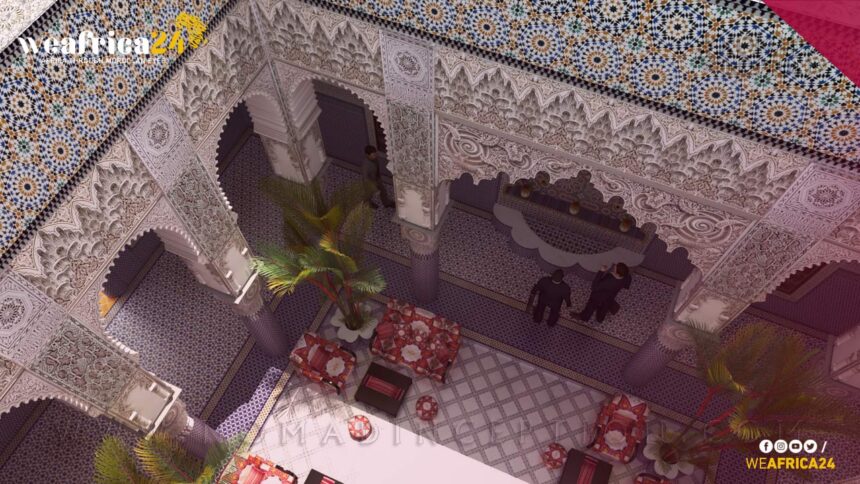Why Moroccan Architecture?
Moroccan architecture is a truly unique and breathtaking art that has captivated the world with its intricate ornamentation and cultural significance. This type of architecture derives influence from numerous cultural customs throughout history such as Arab, Islamic, and Berber traditions – epitomizing an incredibly noteworthy intersection between diverse cultures.
The Art of Moroccan
Aspects that stand out in Moroccan architecture include the implementation of zellij, a form of ornamental tile work. Zellij entails utilizing minuscule and vividly hued tiles to generate elaborate motifs on walls, floors, and ceilings. Through this approach emerges an incredibly breathtaking array of colors coupled with intricate designs unrivaled by any other architectural style worldwide. The art incorporates zellij, a decorative tile work that uses small, vibrant tiles to create intricate patterns and designs on walls, floors, and ceilings. Skilled Moroccan artisans create a stunning kaleidoscopic display of color and design that is unrivaled by any other architecture in the world.
It also incorporates stucco, wood carving, and calligraphy. Architects apply stucco, a plaster-like material, to walls and ceilings before carving intricate patterns and designs, which they can then paint or gild for an opulent effect. Wood carving also plays a significant role in screens, doors, and windows with detailed patterns; adding another level of visual interest to the architecture. Calligraphy involves skillfully using a pen or brush to craft decorative lettering with verses from the Quran or other religious texts.
Moroccan architecture has not only captivated architects and designers around the world but has also had a significant influence on the architecture of other countries, including Spain. The Alhambra, the Alcázar of Seville, and the Great Mosque of Cordoba are just a few examples of Moroccan-inspired architecture in Spain, featuring extensive use of zellij, stucco, and wood carving.
For those looking to incorporate Moroccan-inspired architecture into their designs, it is important to keep in mind the cultural significance of the various decorative elements. Zellij, stucco, wood carving, and calligraphy are all deeply ingrained in Moroccan culture and should be used respectfully and thoughtfully.
Conclusion :
In conclusion, Moroccan architecture is a truly unique and beautiful style that has captured the imagination of people around the world. Its intricate ornamentation, including zellij, stucco, wood carving, and calligraphy, creates a stunning display of color, design, and cultural significance. Its influence on other countries, including Spain, is a testament to its enduring appeal and significance.







